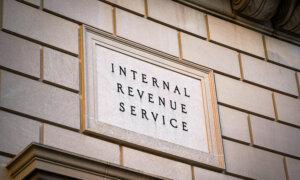The Internal Revenue Service (IRS) reminded employers about filing certain wage documents by the Wednesday deadline, failing which they could face penalties.
The deadline for filing 2023 Form W-2, Wage and Tax Statements, and Form W-3, Transmittal of Wage and Tax Statements, with the Social Security Administration (SSA) is Jan. 31, the IRS said in a press release on Monday. W-2 forms are prepared by an employer for every employee for whom they pay $600 or more per year. In addition to income that is paid, all income, social security, and Medicare tax that were withheld also have to be reported.
“Employers must also provide copies B, C, and 2 of Form W-2 to their employees by Jan. 31,” the agency stated. W-3 is a form that an employer uses to report the combined employee income. Such forms are filed by employers who file more than one W-2.
“Filing these documents timely presents late-filing penalties for employers, helps employees file their income tax returns, and prevents tax fraud.
The employer identification number (EIN) used on these forms must match the number that the IRS had assigned to the business.
“Do not use a Social Security number (SSN) or Individual Taxpayer Identification number (ITIN) on forms that ask for an EIN, and never truncate EINs or SSNs on any forms,” the agency said.
In case an employer needs more time to file the W-2 forms, they can request a 30-day extension with the SSA, which must be done by Jan. 31. Any extensions to provide the W-2 forms to relevant employees must also be done by this date.
From this year, the IRS has mandated that employers having 10 or more information returns like W-2 or W-3 must file the documents electronically. Earlier, the threshold was 250 forms.
“The Jan. 31 deadline also applies to Forms 1099-NEC filed with the IRS to report non-employee compensation to independent contractors.”
Penalties
Any delay in filing W-2 forms can incur penalties. The IRS charges penalties for each information return an employer fails to file on time and each payee statement they fail to provide.For 2024, the agency will charge $60 per delayed form up to 30 days late. If the fling is 31 days late through Aug. 1, the penalty will rise to $120 per form. After Aug. 1, $310 will be charged. In case the agency determines that the employer intentionally disregarded filing the forms, a penalty of $630 will be imposed.
For a business having 100 employees, a 30-day delay for all workers would mean that the employer will have to spend $6,000 in penalties. The IRS will also charge an interest on outstanding penalties as long as the employer does not pay the dues in full.
The agency can reduce or even fully remove a penalty provided the employer can prove that they “acted in good faith and can show reasonable cause.”
“You may have reasonable cause if you acted responsibly before and after the failure occurred; and have significant reasons or the failure resulted from circumstances beyond your control,” the IRS states.
“If you disagree with the amount you owe, you may dispute the penalty. Call us at the toll-free number at the top right corner of your notice or letter or write us a letter stating why we should reconsider the penalty.”
In addition to the SSA, employers must also send W-2 forms to the IRS as well as employees.
Employers are legally required to send W-2 forms to relevant employees before the end of January so that workers have enough time to properly prepare their returns and file taxes by the deadline, which typically falls on April 15.
W-2 for Employees
As the IRS requires employers to furnish W-2 forms to employees by Jan. 31, most employees should get the forms by the first week of February or by the middle of the month at the latest. In case this doesn’t happen, they should contact the employer and raise the issue.- All wages, including bonuses, tips, and other compensation;
- The amount of federal income tax that was withheld from the wages by the employer;
- How much of the income is subject to Social Security tax and the amount of such tax withheld from pay;
- The wages subject to Medicare tax and the amount withheld;
- Dependent-care benefits paid by the employer; and
- How much of the salary will be subject to state and local taxes and the amount of such taxes withheld from pay.







